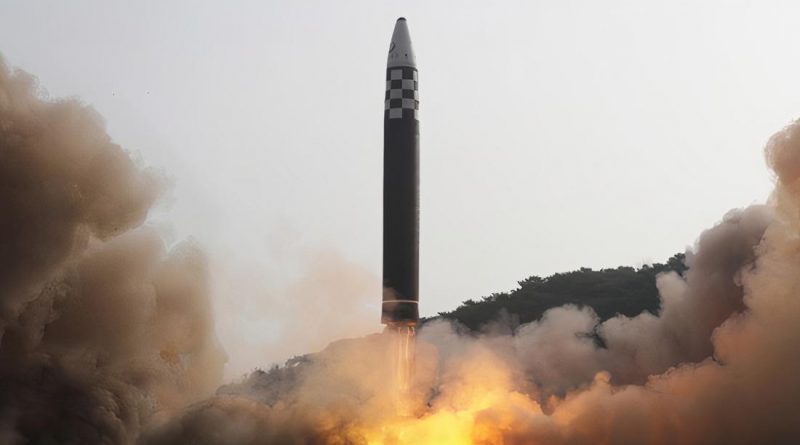What we know about North Korea’s new ICBM
The huge weapon could, at least theoretically, put the entire US mainland in range of a North Korean nuclear warhead, but there’s a lot of unknowns about the missile’s capability to deliver a nuclear payload on target.
Here’s a look at the missile launched Thursday.
North Korean state media Friday released pictures showing the massive, liquid-fueled missile being fired from a mobile launcher at Pyongyang International Airport.
The report from the Korean Central News Agency said the missile hit a maximum altitude of 6,248.5 kilometers (3,905 miles), flew a distance of 1,090 kilometers (681 miles) and had a flight time of 68 minutes before it “landed accurately in the planned waters” between the Korean Peninsula and Japan. That closely matched the estimates of Japanese monitors, who said the missile fell within Japan’s exclusive economic zone, about 150 kilometers (93 miles) west of Oshima Peninsula in Hokkaido, Japan’s northernmost main island.
Analysts said it was fired in a lofted trajectory, enabling it to avoid flying over any other country. But they noted if it were fired in the normal, flatter trajectory of an ICBM, it would have the entire continental United States within its reach.
“This is the longest-range missile North Korea has ever tested,” said Jeffrey Lewis, a weapons expert and professor at the Middlebury Institute of International Studies.
Can this missile carry a nuclear warhead?
The Hwasong-17 is certainly big enough to carry one, or possibly several nuclear weapons, experts say.
But critically, progress doesn’t mean the actual ability to do so.
While Thursday’s test showed the possible range of the missile, experts do not know what kind of payload it was carrying. Because the weight of the payload ultimately affects how far a missile can fly, observers cannot know with certainty the actual range of the missile without this information.
Can North Korea put nuclear warheads on target?
Because ICBM’s are shot into space, like space shuttles or space capsules, the warhead must be able to withstand the fiery journey through the outer layers of Earth’s atmosphere without burning up.
“I’m someone who thinks that they probably would (survive reentry). There are some people who are somewhat doubtful about that,” Lewis said.
But that is something North Korea can learn from tests like Thursday’s, he said.
What’s next in North Korea’s missile program?
Leader Kim Jong Un has laid out an ambitious plan to give North Korea a credible nuclear deterrent, meaning an arsenal powerful enough to prevent any adversary, most notably the US, from attacking.
According to Friday’s KCNA report, Kim said Thursday’s test affirmed that the strategic forces of North Korea “are fully ready to thoroughly curb and contain any dangerous military attempts of the US imperialists.”
Lewis said the North Korean leader is “marching through” a long list of weapon modernizations laid out more than a year ago.
“(Kim) said these are all the things that North Korea is going to do and that included a multiple warhead ICBM. a solid-propellant ICBM, launching a military satellite, and even even putting a nuclear-powered submarine to sea,” Lewis said.
“I don’t think he’s going to stop until that list is completed,” Lewis said.
Previously, North Korea has announced plans to enhance the accuracy of its missiles and increase the range up to 15,000 kilometers (9,320 miles).
“I think we are firmly in a period of missile tests, nuclear tests and tension, that’s probably going to last for a year or so,” Lewis said.




